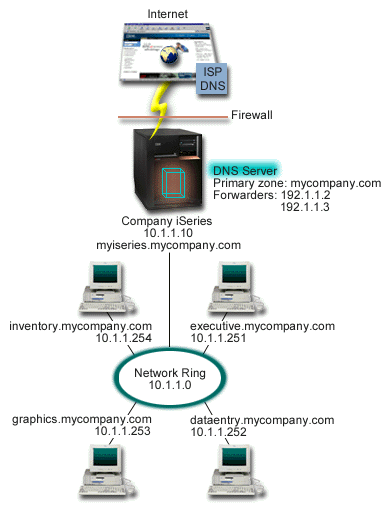This topic explains how Domain Name System (DNS) resolves queries on behalf of clients.
Clients use DNS servers to find information for them. The request might come directly from the client, or from an application running on the client. The client sends a query message to the DNS server that contains a fully qualified domain name (FQDN), a query type, such as a particular resource record the client requires, and the class for the domain name, which is typically the Internet (IN) class. The following figure depicts the sample network from the Single DNS server with Internet access example.

Suppose that host dataentry queries the DNS server for graphics.mycompany.com. The DNS server uses its own zone data and responds with the IP address 10.1.1.253.
Now suppose dataentry requests the IP address of www.jkl.com. This host is not in the DNS server's zone data. There are now two paths that can be followed, recursion or iteration. If a DNS server is set to use recursion, the server can query or contact other DNS servers on behalf of the requesting client to fully resolve the name, then send an answer back to the client. If the DNS server queries another DNS server, the requesting server will cache the answer, so it can use it the next time that it receives that query. A client can attempt to contact other DNS servers on its own behalf to resolve a name. In this process, called iteration, the client uses separate and additional queries based on referral answers from servers.